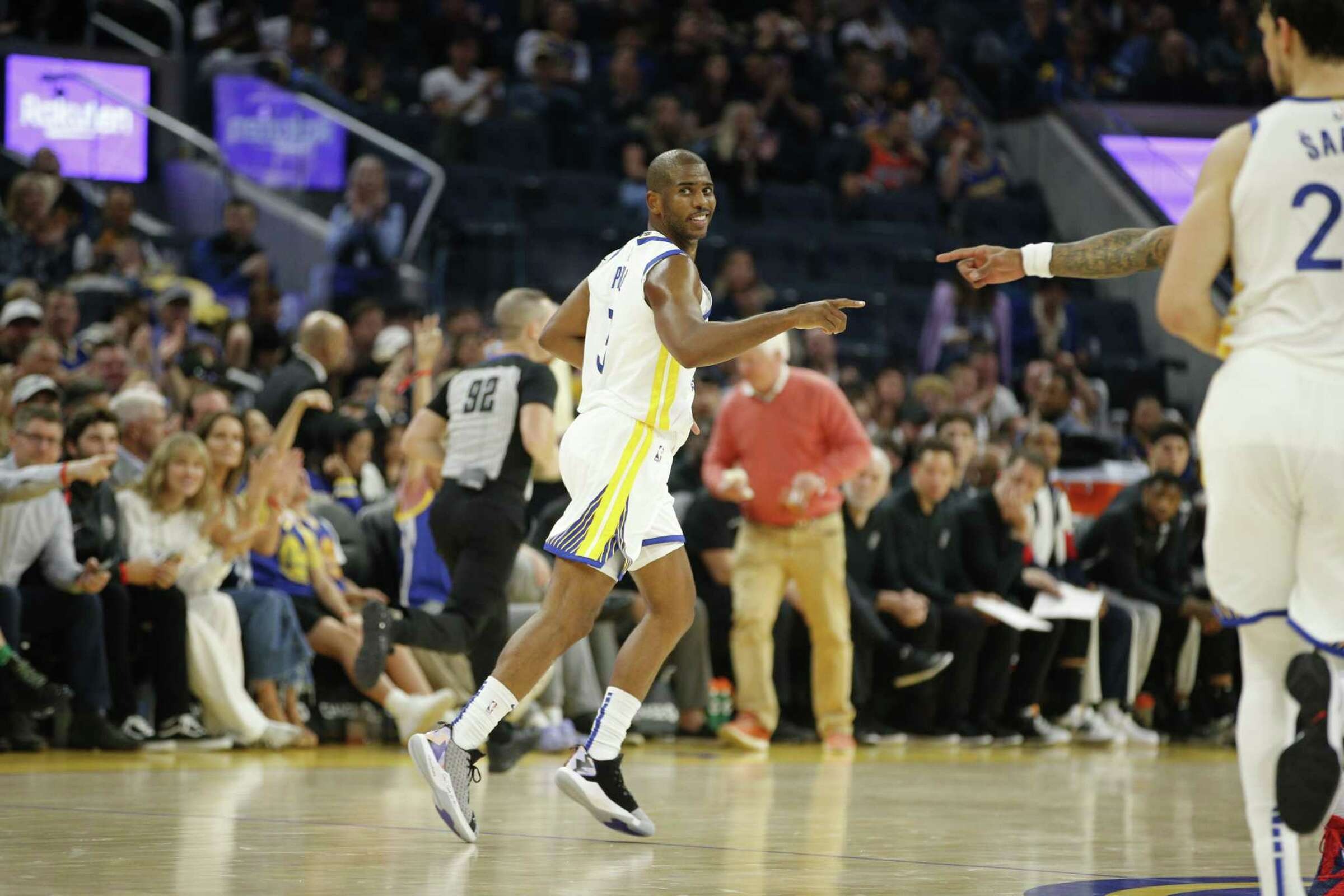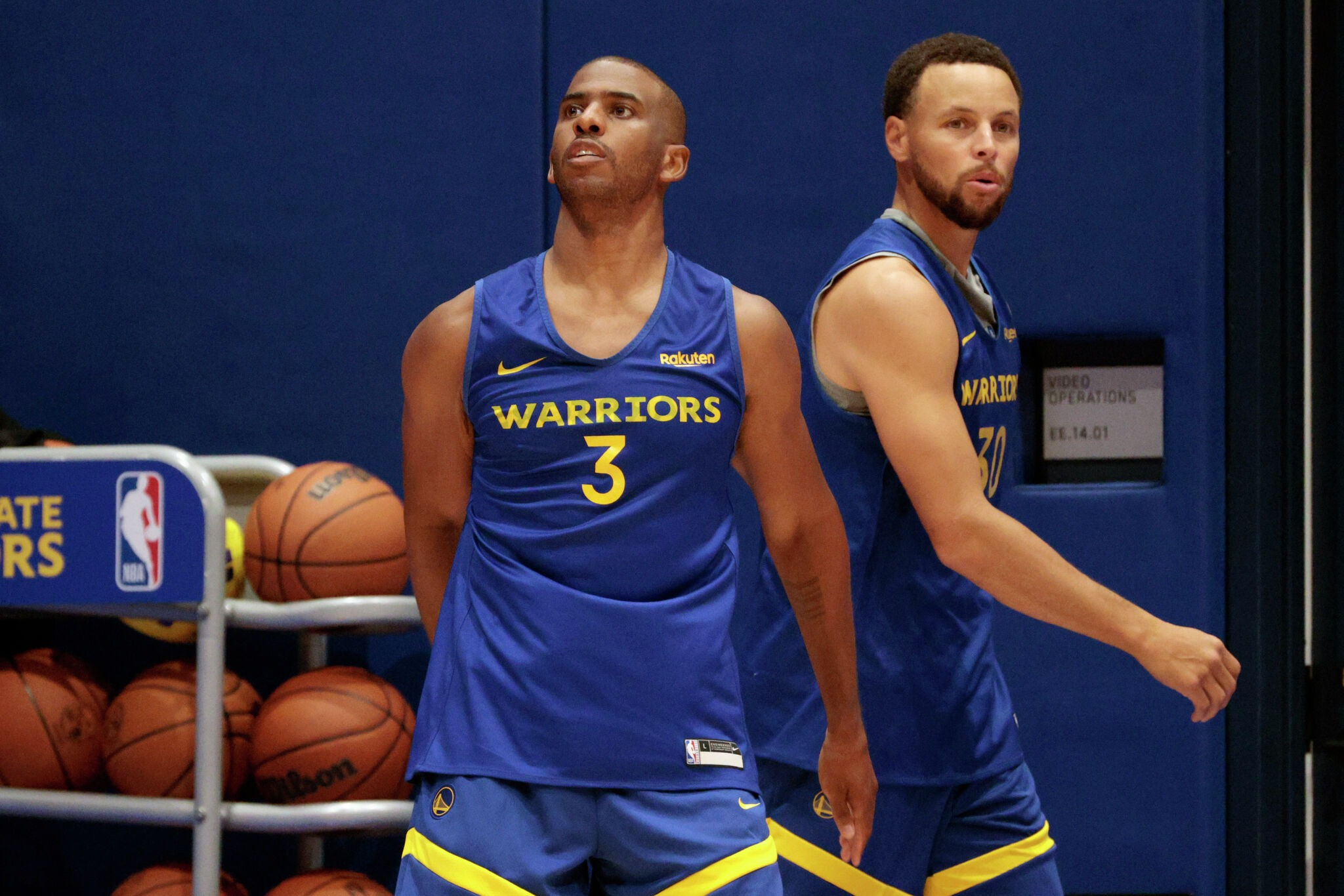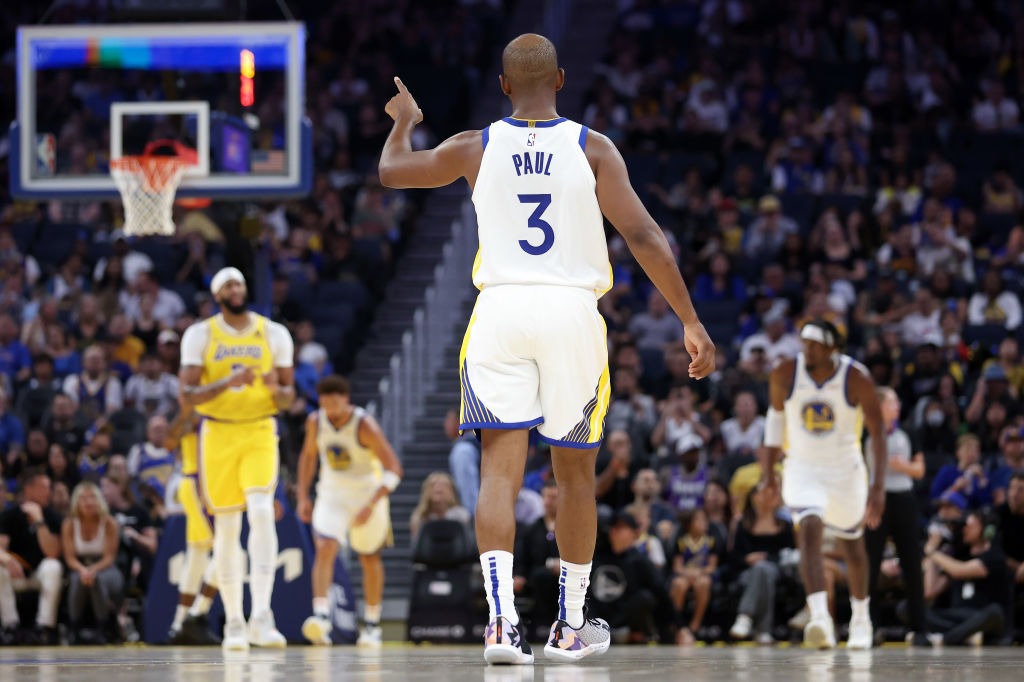The recent ring-of-fire solar eclipse was a rare event, but the Golden State Warriors topped Mother Nature in their final preseason game on Friday.
They got Chris Paul to smile. At least twice.
Good sign. If Paul is smiling, something on the floor is working well. If that happens often enough, the Warriors have a chance to realize the dream scenario they envisioned when they got Paul.

They saw the possibility that this could be one of the greatest ball-movement and court-vision teams in the history of the game.
Paul is the career assist leader among active NBA players, and No. 3 on the all-time list. Stephen Curry is No. 8 on the active-player list and Draymond Green is No. 14.
These three, plugged into coach Steve Kerr’s flow-motion offense, could produce dazzling results. All three of them are undersize by NBA standards, and that could be a problem. But all three live to pass and move the ball, and that could pose a problem for opponents.

For the Warriors, it’s always about the pass. Always has been, since the day Kerr took over. In a conversation with the Chronicle last season, Kerr talked about what he and his staff tried to do in the beginning, and it relates to now.
“What we really wanted was pace and ball movement,” Kerr said. “So we started keeping track of passes, right away. We wanted to be over 300 passes (per game), so we put that on the board after every game, how many passes we made.”
The previous season, under then-coach Mark Jackson, the Warriors averaged 243.8 passes per game, dead last in the league. The Spurs led the league with 330.7 passes per game, and won the NBA title. Hmmm.
In Kerr’s first year, the 2014-15 championship season, the Warriors made 306.6 passes per game, a massive jump of 62.8 passes per game, and led the league in assists at 27.4, up from 23.3 the previous season.
The passing has never stopped. In their 2021-22 championship season, the Warriors threw 310.3 passes per game, second in the league (Nuggets, 310.7). Last season the Warriors led the league in passes per game at 321.6.
Chris Paul can pass. He has led the league in assists five times, including two seasons ago.

Passing the other team dizzy is clearly what the Warriors had in mind when they got Paul. The question is how well he will blend in with his new teammates. Right now there are elements of awkwardness, because Paul has started every game of his career and there is no clear indication that he will be cool when he doesn’t start. Kerr has danced around that issue a bit, saying his team has six starters, but that’s not allowed.
Kerr will no doubt experiment. There will be games when Paul starts next to Stephen Curry, giving the Warriors’ a rare two point-guard attack. Two small point guards, Curry 6-foot-2 and Paul 6-0. That’s highly unconventional, and a defensive disadvantage in a league where many teams have at least one guard in the 6-6, 6-7 range.
Can that work?
Well, it’s a different setting, but the two-point-guard system has worked splendidly a few miles away, at St. Mary’s. Coach Randy Bennett, who runs one of the country’s model programs, has had several teams led by bookend point guards, including Matthew Dellavedova/Mickey McConnell duo in 2009-11 and last season’s tandem of Logan Johnson and Aidan Mahaney.
“It’s like you have four eyes on the court, and one big brain,” is how Johnson described the two-point-guard system.
When Paul is not starting, he should bring a spark to the second unit that could harken back to the Warriors of Kerr’s first two seasons, when the passing and brainy ball movement of Andre Iguodala and Sean Livingston made the Warriors’ second unit a terror.

The Warriors’ pass-pass-pass system is about more than just getting guys better open shots. There is a psychological component. Andrew Bogut, whose passing and flow-facilitating played a major role in making those early Kerr teams so fearsome, recently recalled the effect of all that ball movement.
Referring to the season before Kerr, Bogut said, “In the fourth quarter, teams would make adjustments and get the ball out of Steph’s hands, and Harrison Barnes catches in the corner for a wide-open 3 and misses it, because he hasn’t had the ball in so long. That’s the hardest shot in basketball to make.
“That’s where it changed under Steve, where he was getting the ball through my hands, getting it through Draymond’s hands, everyone was moving the ball. And even though I wasn’t shooting (early in games), and Draymond wasn’t shooting, Harrison wasn’t shooting, you felt involved. That’s a very important psyche in pro sports; it’s hugely important for our team morale and the way we played.
“It’s the best way to play, period.”
Those good old days could return, with a vengeance. The tipoff could be the expression on Paul’s face.